Ever wondered if you can just toss freeze-dried fruit into water? Well, you can, and it’s pretty neat. Freeze-dried fruits are like the superheroes of the fruit world, keeping all their goodness locked in until you need it. They’re perfect for snacking, but when you want to bring them back to life, water does the trick. This article dives into the whole process of rehydrating these fruits and the best ways to do it.
Key Takeaways
- Freeze-dried fruits can be easily rehydrated by adding water, making them versatile for various recipes.
- Rehydration affects the texture and flavor, often bringing them closer to their fresh state.
- Different methods like soaking, spraying, and cooking offer various results when rehydrating freeze-dried fruits.
- The temperature of the water and the type of fruit can influence the rehydration process.
- Freeze-dried fruits retain most of their nutrients, making them a healthy choice even after rehydration.
Understanding Freeze-Dried Fruits and Their Rehydration
What is Freeze-Drying?
Freeze-drying is a method of preserving food by removing moisture, which helps maintain the food’s original structure and nutrients. The process involves freezing the food and then reducing the surrounding pressure to allow the frozen water in the food to sublimate directly from the solid phase to the gas phase. This technique ensures that the food retains its shape, flavor, and nutritional value. Freeze-dried fruits, for example, can be rehydrated quickly and are often indistinguishable from their fresh counterparts once water is added.
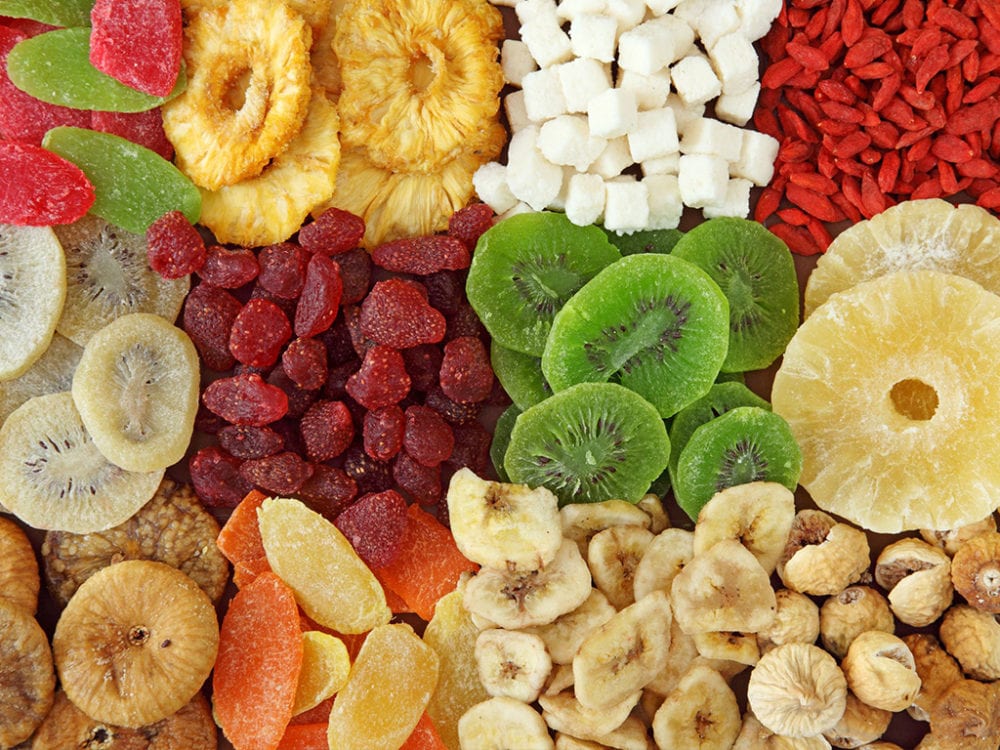
Freeze-drying is a method of preserving food by removing moisture
Nutritional Benefits of Freeze-Dried Fruits
Freeze-dried fruits offer numerous health benefits. They retain most of their vitamins and minerals, making them a nutritious option for snacks and meals. The freeze-drying process preserves the essential nutrients while extending the shelf life of the fruits. This makes them a convenient choice for those looking to incorporate healthy options into their diet without sacrificing taste or nutritional value.
Common Uses of Freeze-Dried Fruits
Freeze-dried fruits are incredibly versatile and can be used in various culinary applications. They are popular in:
- Snacks: Lightweight and easy to carry, making them ideal for on-the-go munching.
- Baking: Used in cakes, muffins, and cookies to add flavor and texture.
- Cereals and Yogurt: Mixed into breakfast bowls for added nutrition and taste.
With the rise of innovative food preservation methods, freeze-dried fruits have become a staple in many households. Their ability to maintain flavor and nutrients while offering long shelf life is unmatched.
eHerbal: Innovator and Manufacturer
In Vietnam, eHerbal stands out as a leading manufacturer and innovator in the freeze-drying industry. They specialize in producing high-quality freeze-dried products and are actively seeking partnerships with food and beverage companies and distributors. With their state-of-the-art facilities and commitment to quality, eHerbal is poised to make significant contributions to the future of nutrition and food technology.
Can You Put Freeze Dried Fruit in Water?
The Science Behind Rehydration
Freeze-dried fruits undergo a process where moisture is removed, leaving behind a light, crispy product. When you add water, these fruits quickly absorb it, reverting to their original form. The science here is simple: the porous structure left by freeze-drying allows for rapid water absorption, making rehydration efficient.
Immediate Effects of Water on Freeze-Dried Fruits
When you drop freeze-dried fruits in water, they start soaking it up almost instantly. This immediate absorption is what makes them plump up quickly. Depending on the fruit, this process can take a few minutes to an hour. For instance, strawberries might take longer to fully rehydrate compared to smaller fruits like blueberries.
Potential Changes in Texture and Flavor
Adding water to freeze-dried fruits can alter their texture and flavor. Some fruits regain their original texture, while others might become a bit mushy. Flavor-wise, rehydrated fruits often taste closer to their fresh counterparts, though some might find them slightly less intense. It’s a balancing act between texture and taste.
Freeze-dried fruits offer a convenient way to enjoy the taste and nutrients of fresh fruits without spoilage concerns. Companies like eHerbal are pioneering in creating high-quality freeze-dried products that cater to health-conscious consumers.
Methods for Rehydrating Freeze-Dried Fruits
Soaking Method: Pros and Cons
Rehydrating freeze-dried fruits through soaking is a straightforward and effective approach. Simply place the fruits in a bowl, cover them with water, and let them soak until they regain their original texture. The soaking method is versatile, allowing you to use either hot or cold water depending on the fruit type and desired outcome. The key advantage is that it allows for a uniform rehydration process, ensuring the fruit absorbs water evenly. However, the downside is time consumption, as some fruits may require several hours to fully rehydrate, and over-soaking can lead to a mushy texture.
Spraying Method: Best Practices
For more delicate fruits like berries or herbs, the spraying method is ideal. Using a food-grade spray bottle, lightly mist the fruits with water. This method is particularly useful when you want to maintain the fruit’s aesthetic appeal, making it perfect for garnishes. To ensure even rehydration, repeat the spraying process as necessary, allowing time between applications for the fruit to absorb the moisture. This approach is less time-consuming than soaking and helps retain the fruit’s shape and vibrant color.
Cooking Method: When to Use
Incorporating freeze-dried fruits directly into cooking is another method of rehydration, especially when preparing dishes that require moisture, like stews or sauces. By adding the freeze-dried fruits to a simmering pot, they can rehydrate as they cook, absorbing the flavors of the dish. This method is efficient and enhances the overall taste profile of the meal. However, it’s crucial to monitor the cooking time to prevent the fruits from becoming overly soft.
Freeze-dried fruits have revolutionized the way we consume and store fruits, offering extended shelf life and preserved nutrients. As a leading manufacturer and innovator in Vietnam, eHerbal is at the forefront of this technology, providing high-quality freeze-dried products to global markets. They are actively seeking partnerships with food and beverage companies and distributors, aiming to expand their reach and introduce more consumers to the benefits of freeze-dried fruits.
Factors Affecting the Rehydration Process
Temperature of Water: Hot vs. Cold
The temperature of water plays a significant role in rehydrating freeze-dried fruits. Hot water tends to speed up the rehydration process, allowing the fruit to absorb moisture more quickly. This can be particularly useful when time is a constraint. However, using cold water might preserve the texture and flavor better, as it prevents the fruit from becoming too mushy. The choice between hot and cold water largely depends on the desired outcome and the type of fruit being rehydrated.
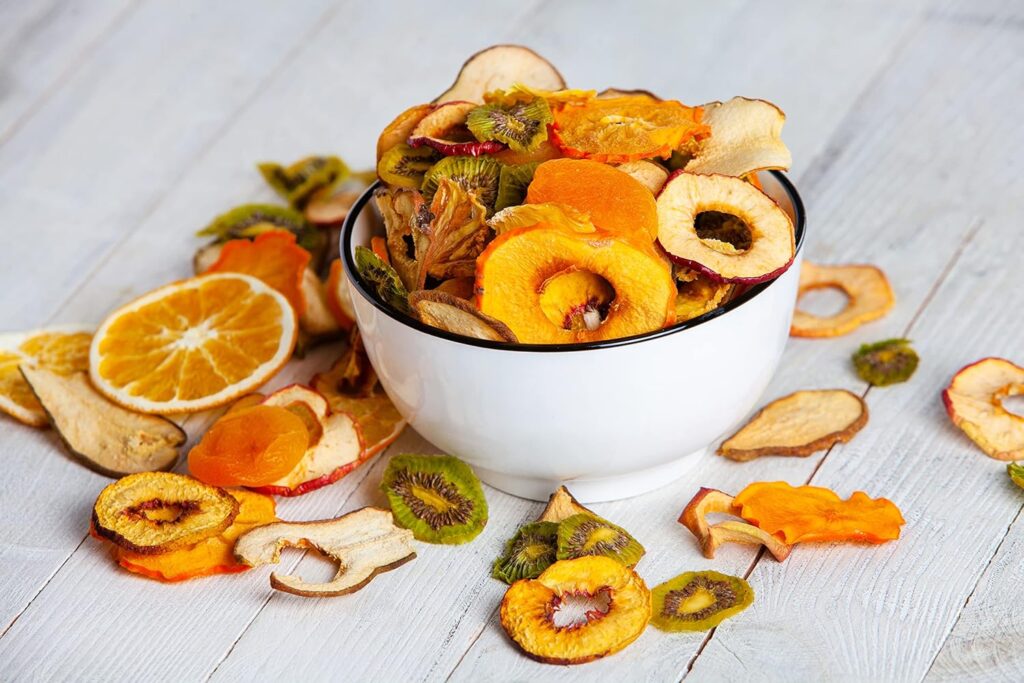
Temperature of Water: Hot vs. Cold
Duration of Soaking
The time you let the freeze-dried fruit soak in water is crucial. A longer soaking period generally results in more thorough rehydration, but it can also lead to a loss of texture. For those looking to maintain a firmer consistency, shorter soaking times are recommended. It’s essential to find a balance that suits your preference and the specific fruit you are rehydrating.
Type of Fruit and Its Impact
Different fruits react uniquely to the rehydration process. Berries, for example, might rehydrate faster than larger fruits like apples or pears. The inherent structure and size of the fruit influence how quickly and effectively it can absorb water. Understanding these differences can help you optimize the rehydration process for each type of fruit.
Freeze-dried fruits offer a convenient way to enjoy fruits year-round, retaining most of their nutritional value and flavor. As you explore the rehydration process, consider experimenting with different methods to find what works best for your taste and texture preferences.
eHerbal: Innovating in Freeze-Drying
eHerbal, a leading manufacturer and exporter in Vietnam, is at the forefront of freeze-drying technology. They are actively seeking partnerships with food and beverage companies and distributors to expand their innovative solutions globally. Their commitment to quality and sustainability makes them a valuable partner in the world of freeze-dried products.
Practical Applications of Rehydrated Freeze-Dried Fruits
Rehydrated freeze-dried fruits are a fantastic addition to everyday meals. They can be mixed into oatmeal, yogurt, or cereal for a burst of flavor and nutrition. You can also toss them into salads for a sweet twist or blend them into smoothies for a refreshing drink. This versatility makes them an excellent choice for enhancing the taste and nutritional value of your meals.
Using in Desserts and Snacks
In the world of desserts and snacks, rehydrated freeze-dried fruits shine brightly. They can be used as toppings for cakes and pastries, or mixed into cookie dough for added texture and flavor. Try incorporating them into homemade ice cream or yogurt for a fruity surprise. Their ability to retain flavor makes them a delightful ingredient in various sweet treats.
Enhancing Beverages with Rehydrated Fruits
Rehydrated freeze-dried fruits can elevate your beverages to new heights. Add them to teas, cocktails, or infused water to impart a natural sweetness and vibrant color. They can also be blended into juices or smoothies for a nutrient-packed drink. This makes them a popular choice for both home and professional use in the beverage industry.
Freeze-dried fruits, once rehydrated, offer a world of culinary possibilities. Their ability to retain most of their original flavor and nutrients makes them a valuable ingredient in modern cuisine.
With the growing interest in health-conscious eating, freeze-dried fruits have become a staple in many kitchens. As a leading manufacturer and innovator in Vietnam, eHerbal is at the forefront of this trend, offering high-quality freeze-dried products. They are actively seeking partnerships with food and beverage companies and distributors to expand their reach and bring these nutritious options to a wider audience. With their advanced production facilities and commitment to quality, eHerbal is well-positioned to meet the demands of the global market.
Comparing Freeze-Dried and Dehydrated Fruits
Differences in Rehydration
When it comes to rehydrating, freeze drying and dehydration are two methods that significantly differ in taste, texture, and quality. Freeze-dried fruits tend to rehydrate quickly and return to a state that closely resembles their fresh form. On the other hand, dehydrated fruits often become a bit chewy and condensed, with some alterations in taste. This makes freeze-dried fruits a favorite for those who want to enjoy something that feels and tastes like fresh fruit.
Nutritional Value Comparison
Freeze-drying is known for its ability to preserve most of the vitamins and minerals in fruits. This method involves freezing the fruit and then removing the moisture under vacuum conditions, which helps in retaining the nutritional content. Dehydration, however, can cause a slight loss in some heat-sensitive nutrients due to exposure to warm air. For those looking to maximize nutrient retention, freeze-drying is often the way to go.
Shelf Life and Storage Considerations
Both freeze-dried and dehydrated fruits extend the shelf life of the product significantly. However, freeze-dried fruits generally have a longer shelf life, especially when stored in airtight conditions. This makes them a popular choice for long-term storage and emergency preparedness. Dehydrated fruits, while still durable, might not last as long as their freeze-dried counterparts.
Freeze-dried fruits are a great way to enjoy the taste and nutritional benefits of fresh fruits without the worry of spoilage. They are perfect for those who value convenience and health.
Expert Tips for Optimal Rehydration
Avoiding Common Mistakes
Rehydrating freeze-dried fruits might seem straightforward, but there are pitfalls to watch out for. One major mistake is adding too much water too quickly. This can lead to a mushy texture, especially with delicate fruits like berries. Instead, start by adding a small amount of water and let the fruit absorb it slowly. If you see that the fruit isn’t soaking up the water anymore, give it a little time before adding more.
Maximizing Flavor Retention
To keep that fresh fruit taste, consider the temperature of the water you’re using. Warm water tends to work better for fruits that are intended to be soft and juicy, while cold water is best for maintaining the crispness of fruits like apples. Also, remember that the quality of your water matters. Using filtered or bottled water can prevent any off-flavors that might come from tap water.
Ensuring Nutritional Integrity
Freeze-dried fruits are packed with nutrients, and you want to keep them intact during rehydration. Avoid using boiling water, as high temperatures can degrade sensitive vitamins. Instead, opt for lukewarm water for a gentler rehydration process. Also, it’s a good idea to consume the rehydrated fruits soon after preparation to enjoy their full nutritional benefits.
When it comes to rehydrating freeze-dried fruits, patience and precision are key. By taking the time to do it right, you can enjoy fruits that are as close to fresh as possible.
The Future of Nutrients and Foods
Freeze-drying technology is not just about preserving food; it’s about preserving the future of nutrition. By maintaining the natural flavors and nutrients of produce, freeze-drying is setting a new standard for healthy eating. As we look to the future, innovations in this field will continue to transform how we think about and consume food.
eHerbal: A Leader in Innovation
Located in Vietnam, eHerbal is at the forefront of freeze-drying technology, offering a range of high-quality, natural products. As a manufacturer and exporter, eHerbal is committed to sustainability and innovation, providing products that retain their nutritional integrity. They are seeking partnerships with food and beverage companies and distributors to expand their reach and share the benefits of freeze-dried products globally.
Staying hydrated is super important for your health. To make sure you drink enough water, try to sip on fluids throughout the day, especially when you’re active. Eating fruits and veggies can also help since they have a lot of water in them. For more tips on how to stay hydrated and feel your best, visit our website!
Conclusion
In conclusion, freeze-dried fruits can indeed be rehydrated by adding water, offering a convenient way to enjoy them as if they were fresh. The methods for rehydration vary, from soaking to spraying, each with its own benefits depending on the type of fruit and the desired outcome. Whether you’re looking to use them in cooking or as a snack, understanding these methods can help you achieve the best results. Remember, patience is key, as some fruits may take longer to rehydrate than others. By experimenting with these techniques, you can find the perfect balance to bring your freeze-dried fruits back to life.
Read more: How Long Can Freeze Dried Fruit Last? A Comprehensive Guide to Shelf Life and Storage
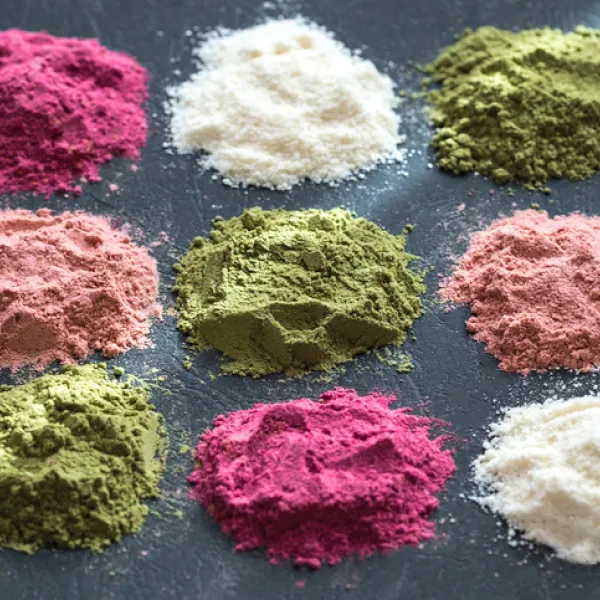
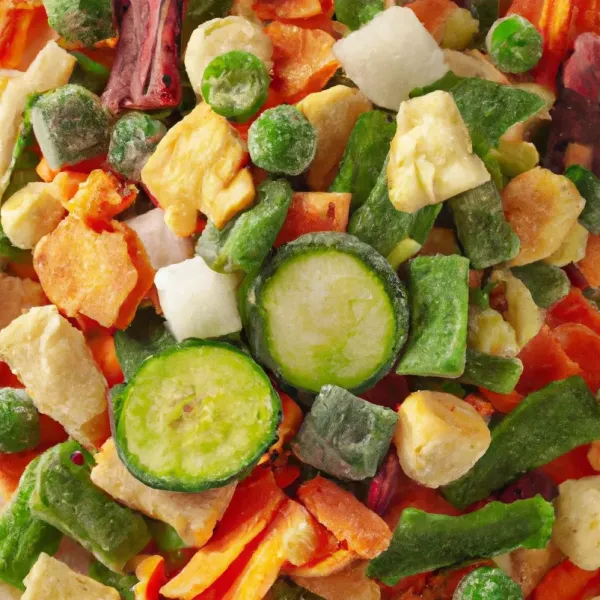
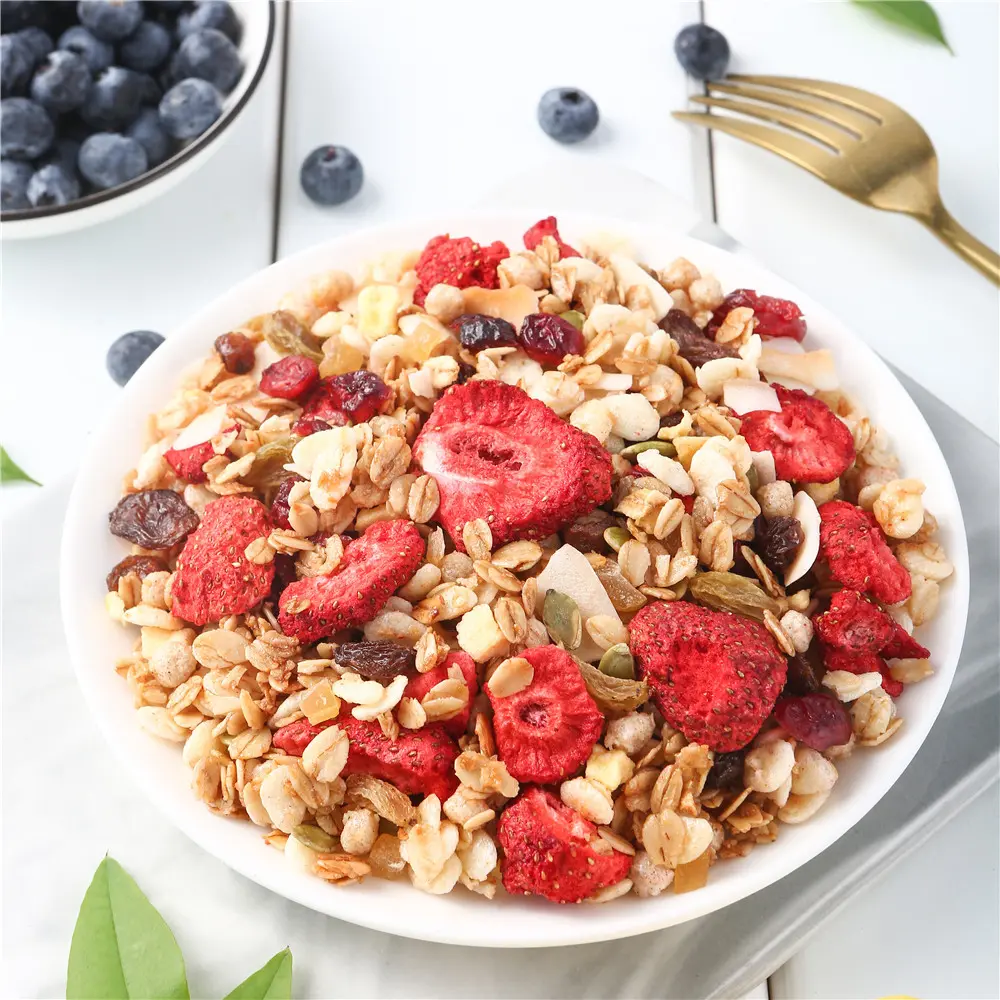
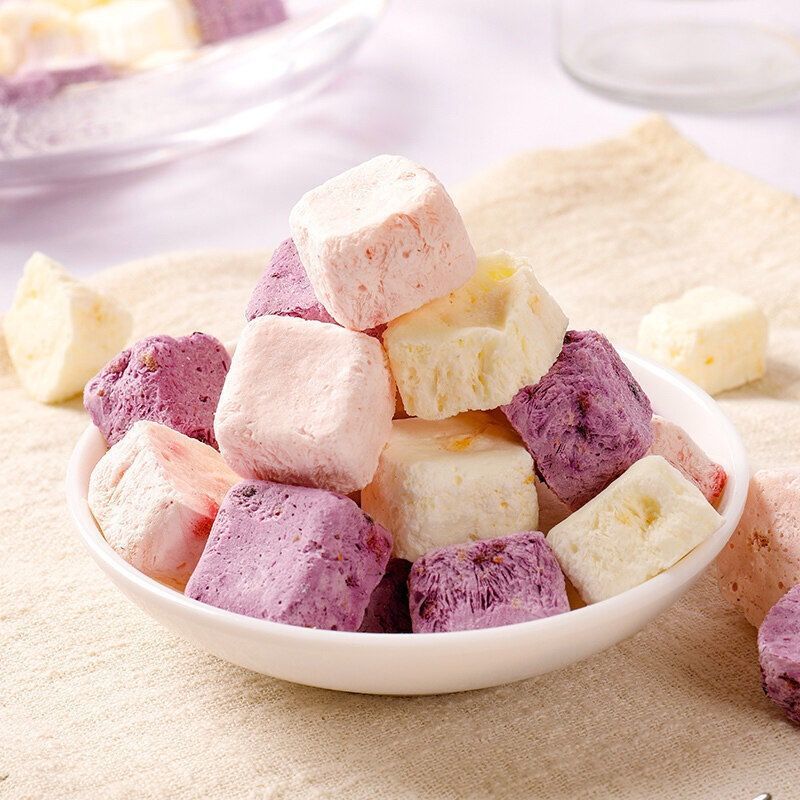
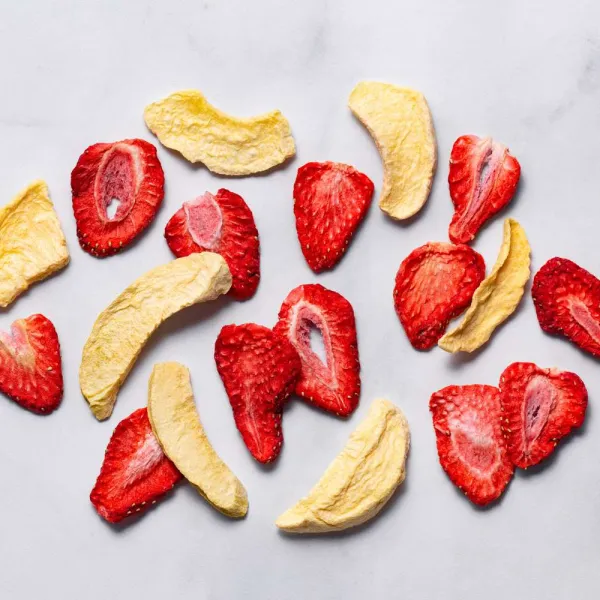
You may also be interested in
Are Freeze Dried Strawberries Keto-Friendly? A Comprehensive Guide
Read more...May
Are Freeze Dried Fruits Nutritious? Unpacking Their Health Benefits and Nutritional Value
Read more...Apr
Where to Find Freeze Dried Fruit Wholesale: What Aisle is Freeze Dried Fruit In?
Read more...Apr
Is Freeze Dried Fruit Better Than Dehydrated? Exploring the Differences and Benefits
Read more...Apr
Is Freeze Dried Fruit Good for Weight Loss? Discover the Surprising Benefits!
Read more...Apr
How Long Will Freeze Dried Fruit Last? Understanding Shelf Life and Storage Tips
Read more...Mar